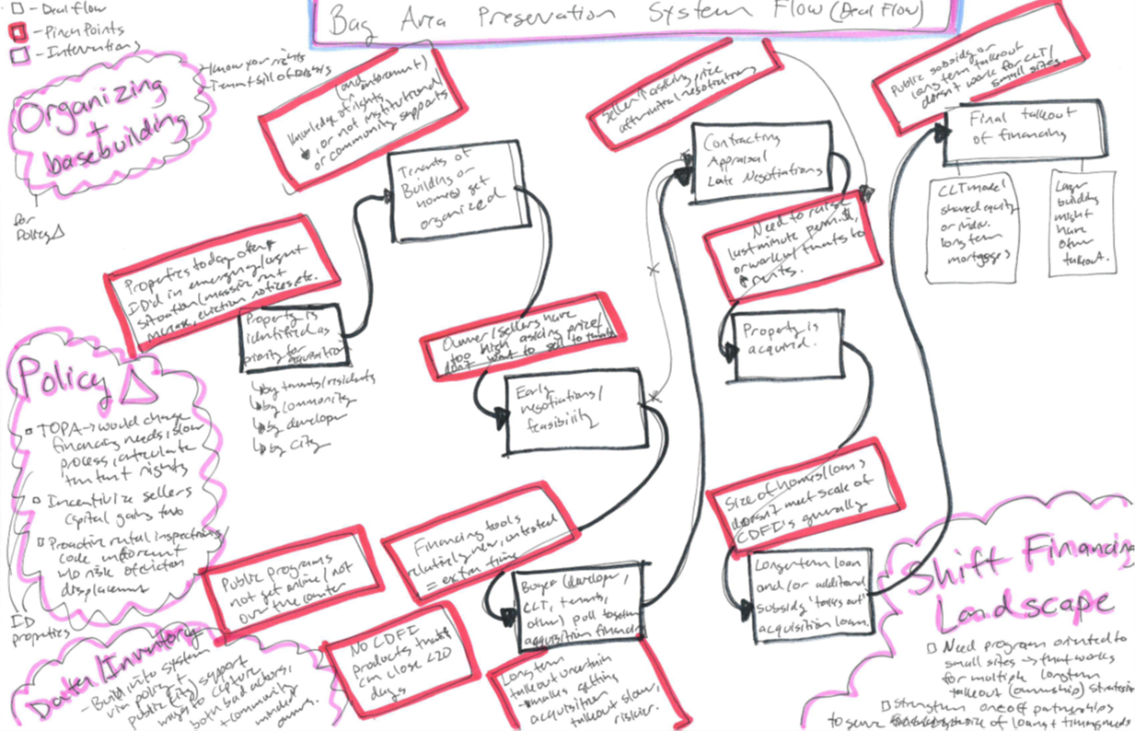Five Ways Funders Can Catalyze Affordable Housing Preservation
GCC is excited to announce publication of “Five Ways Funders Can Catalyze Affordable Housing Preservation,” in collaboration with the San Francisco Foundation and LISC Bay Area. We know that the COVID-19 pandemic has exacerbated longstanding racial inequities around housing, increasing the risk of displacement for many families of color in the Bay Area and across the country. A just recovery from the pandemic must therefore include affordable housing preservation strategies to take housing off the speculative market and keep tenants in their homes over the long-term. This brief utilizes research, case studies, and our experiences as a collaborative to lay out what those strategies are and how funders can help accomplish them.
Funders in the Bay Area have a unique opportunity right now to invest in preserving affordable housing. Last year, the state established a new $500 million program, the Foreclosure Intervention and Housing Preservation Program (FIHPP), while the Bay Area Housing Finance Agency plans to launch a preservation financing and technical assistance pilot. As the public sector steps up its support for preservation, philanthropy has a vital, complementary role to play. Funders can support community-based organizations to make sure they have the necessary staff and technical training to take advantage of public dollars when they start to flow. At the same time, philanthropic investment in long-term changes to preservation can create a system more equitable and responsive to the needs and visions of communities of color.
For preservation to successfully advance racial equity and economic inclusion, tenants and organizers must be centered and supported from the beginning. GCC has been supporting tenant-centered preservation efforts in Oakland and Vallejo for the past six years through its Bay Area for All (BA4A) partnership with BARHII and the 6 Wins Network, much of which focused on creating partnerships between tenant groups and community land trusts (CLTs) while providing capital to the CLTs to fund preservation deals. Through BA4A’s work with community land trusts, we have learned a great deal about how the preservation system works, and in some cases, doesn’t. Because preservation deals move quickly and tend to involve smaller, tenant-occupied buildings, the well-developed financial and regulatory systems that facilitate affordable housing production don’t necessarily translate.

Back in 2019, former GCC director Elizabeth Wampler and BA4A partners mapped out a preservation deal to identify the places where deals often got stuck (diagram above). These roadblocks included challenges proactively identifying at-risk properties for acquisition, competition with corporate landlords, unforeseen rehab needs and costs, and lack of long-term public subsidies (especially for CLTs with smaller properties). That whiteboard brainstorm was the inspiration for this brief. With a cleaned-up version of the deal flow diagram as a starting point, the brief identifies five types of funder actions that would overcome roadblocks, take advantage of new public resources, and help catalyze tenant-centered preservation efforts across the region.
- Capital: offer acquisition capital that can be quickly deployed by community-based developers to successfully compete in a fast real estate market (for example: capital grants, predevelopment loans, loan guarantees, and low-interest debt)
- Capacity-Building: provide grants to tenant organizations and community-based developers to hire and train staff on the complexities of preservation deals
- Policy: fund organizing and local advocacy to pass anti-speculation policies like Tenant/Community Opportunity to Purchase Acts (TOPA/COPA), which several Bay Area cities, including Berkeley, Oakland, San Jose, and East Palo Alto, are considering
- Data: create publicly accessible tools that centralize information to help tenants, organizers, and community-based developers look up property information and identify acquisition opportunities
- Convening: bring partners together, especially in places where this work is emergent, or the public sector is not yet supportive of preservation work
Last month, we shared this brief at a learning session for GCC’s Funder Network and partners. The event included a discussion with Chris Iglesias (CEO of the Unity Council) and Steve King (ED of the Oakland Community Land Trust), moderated by Caroline McCormack (Director of Preservation for Enterprise Community Partners, Northern CA). Chris and Steve both stressed the need for flexible, low-cost capital to support an equitable recovery from the pandemic, noting that a lot of tenants in Oakland are still struggling to make rent. Steve also named the lack of financial products for single-family home acquisitions as a significant racial equity issue. Session attendees added that federal American Rescue Plan funds can be used for preservation, but that this money isn’t flowing fast enough to communities. They also described capacity-building support from philanthropy as an investment in a new generation of community leaders.
Community organizations and land trusts already have successful models for tenant-centered preservation. But developing this work further requires deeper philanthropic support to these organizations as well as interventions in multiple parts of the preservation ecosystem. This brief demonstrates how funders can make a difference; we hope it motivates the sector to jump into action. Please share it widely and reach out if you want to learn more!



